North Site | North Cave
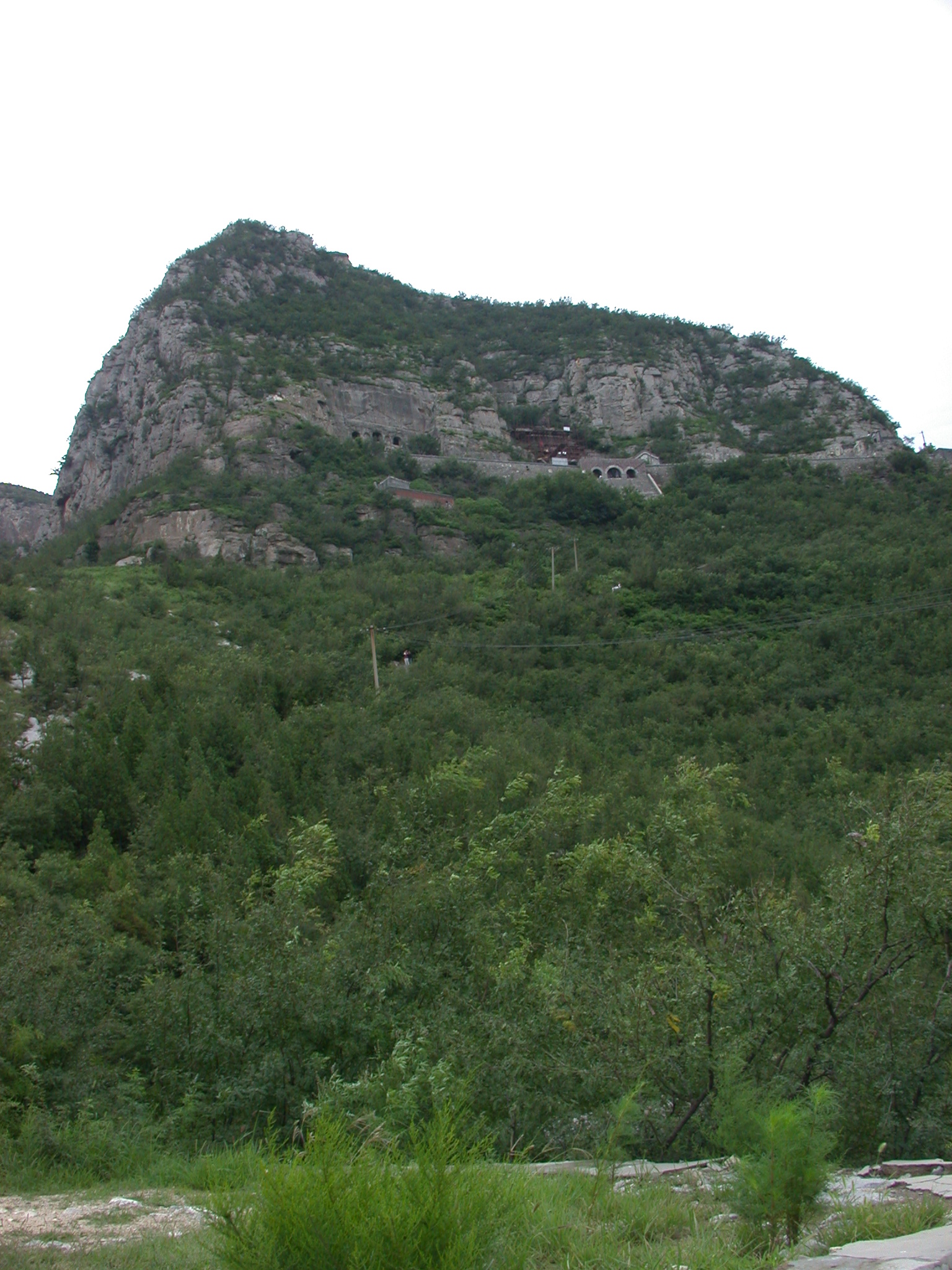
There are three main caves of the Northern Qi period at Northern Xiangtangshan in Wu’an county, in southern Hebei province. The location, now a rural farming and mining area, is recorded to have been a stopping place on the road out of the capital at Yecheng, used by the palace for outfitting the royal entourage. The caves are halfway up the west-facing side of the mountain formerly known as Gushan or Drum Mountain. A stone stele erected in 1159 at Zhilisi, the Buddhist monastery at the base of the mountain, records that the caves were begun in the reign of Wenxuan (r. 550-559), the first emperor of the Northern Qi dynasty. There are no longer any contemporary records of the making of the caves, though it is likely that dedicatory inscriptions at the site would originally have recorded the creation and patronage of the caves. Traces of large stone steles that might formerly have had these inscriptions engraved on them still remain near the entrances to the caves. The only Northern Qi period inscription now existing at the site is the dedication of the engraving of Buddhist scriptures in stone at the South Cave by the Northern Qi official, Tang Yong in 572. Damage to the caves has occurred over the centuries from natural erosion and earthquakes. However, beginning around 1910 and continuing through the early part of the last century, humans have been the cause of the most severe losses. In response to a growing art market, people cut away the heads and hands of most of the images at the Northern Xiangtangshan site. Repairs made soon after and new heads and new figures made to replace the ones that had been taken, allowed local worship at the caves to continue as before.
North Cave façade
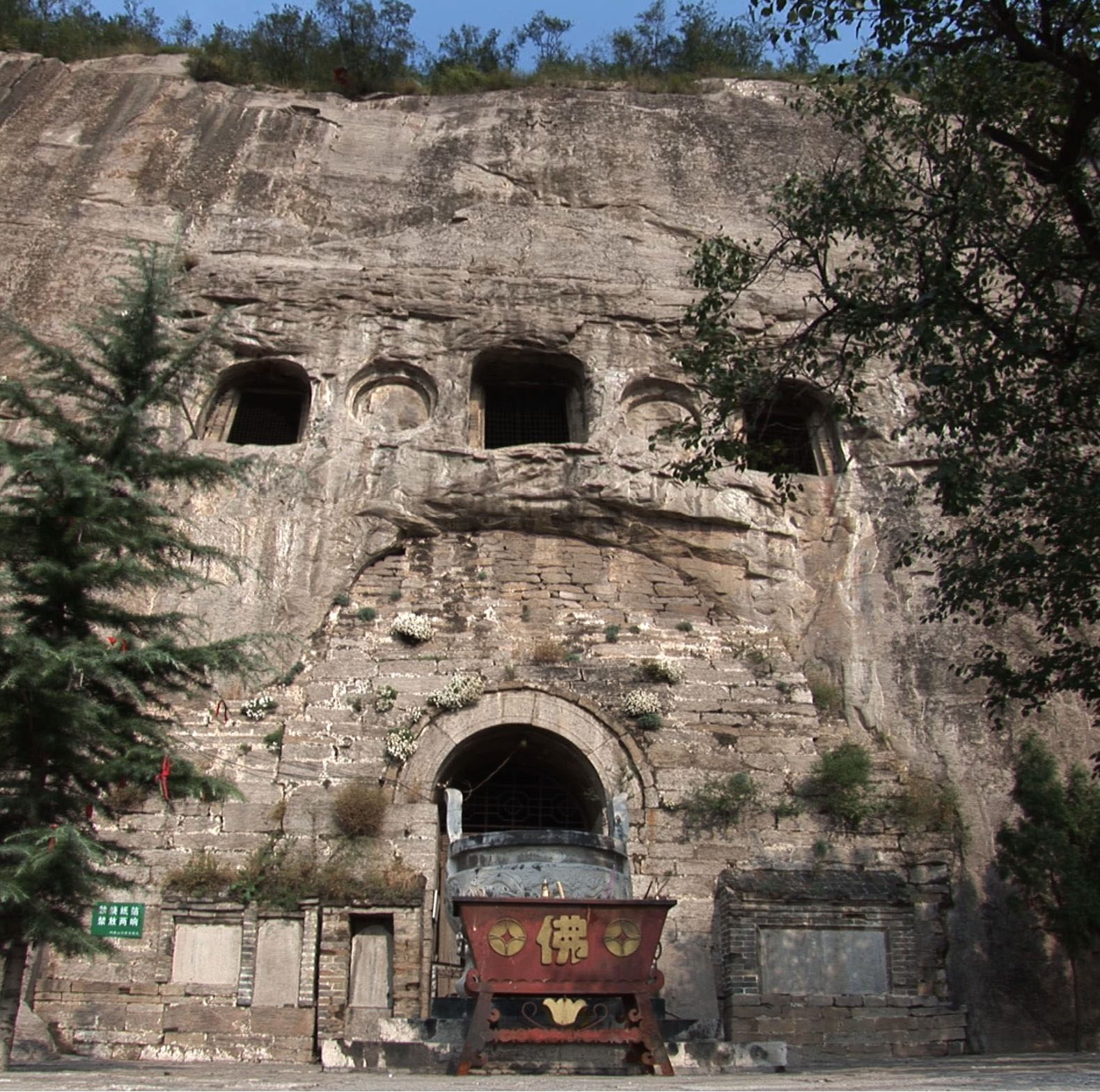
The North Cave, also known as the Great Buddha Cave, is the largest and earliest of the Xiangtangshan caves. It has a masterful design that encompasses concepts of time and space in a Buddhist cosmology, and it can be associated with the founding of the Northern Qi dynasty. The facade is damaged from natural erosion and a severe earthquake in the sixteenth century. The entrance has been reconstructed of blocks of stone. There are traces of what appears to have been a domed roof at the top, above the three windows that provide light to the cave interior. Inside the cave there is a massive four-sided central pillar, into which the three principal Buddha images of colossal size, representing the Buddhas of the Three Ages—Past, Present, and Future—are carved. Each of the seated Buddhas is flanked by two standing bodhisattvas. Around the walls and at the top of the central pillar are smaller Buddhas, bodhisattvas, and other divinities, including earth spirits, heavenly apsarases, and also demons vividly rendered in high relief. Deities and nature spirits from countless realms and ages of the cosmos are thus seen to be brought together by the power of the Dharma or Buddhist wisdom. The carving is masterful with figural sculptures, flaming haloes, and domed stupa-shaped niches surrounded by lotus blossoms, glowing jewels, and ornamental patterns, all worked and finished with great skill.
North Cave central pillar front (west), Buddha aureole
North Cave central pillar, front (west)
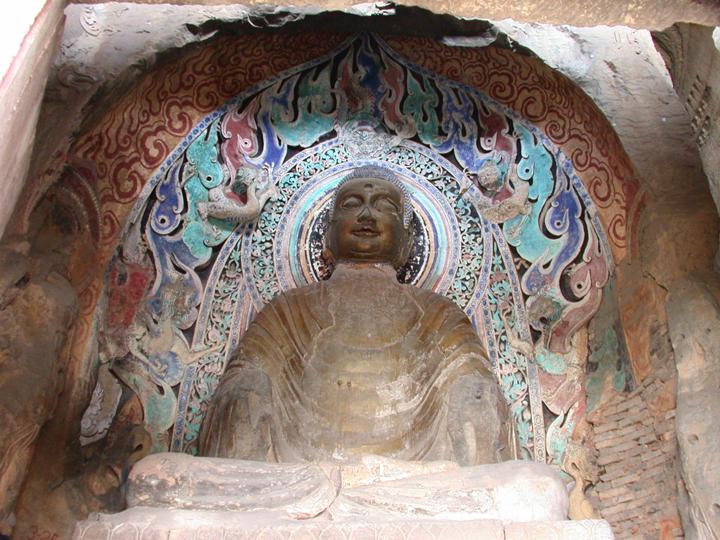
North Cave central pillar, north side
North Cave central pillar, south side
North Cave central pillar southwest corner, Wind Spirit King
North Cave central pillar north, Censer
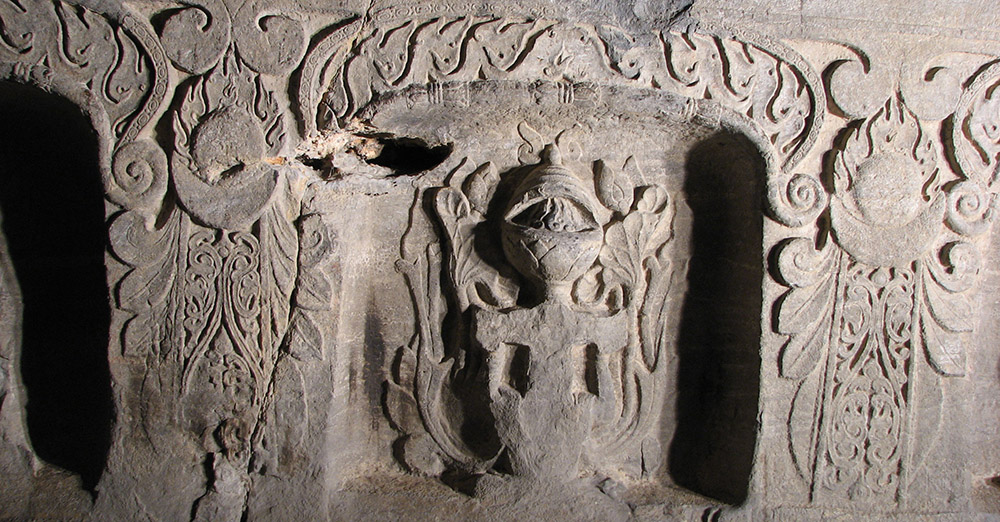
North Cave central pillar north, River Spirit King
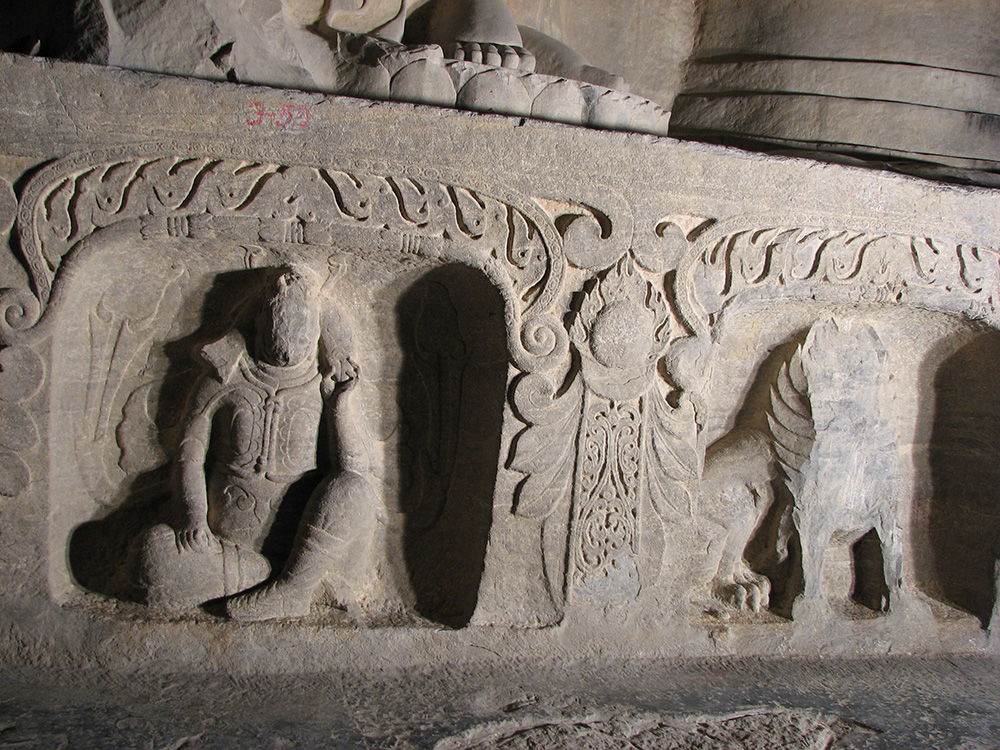
North Cave central pillar south, Tree Spirit King
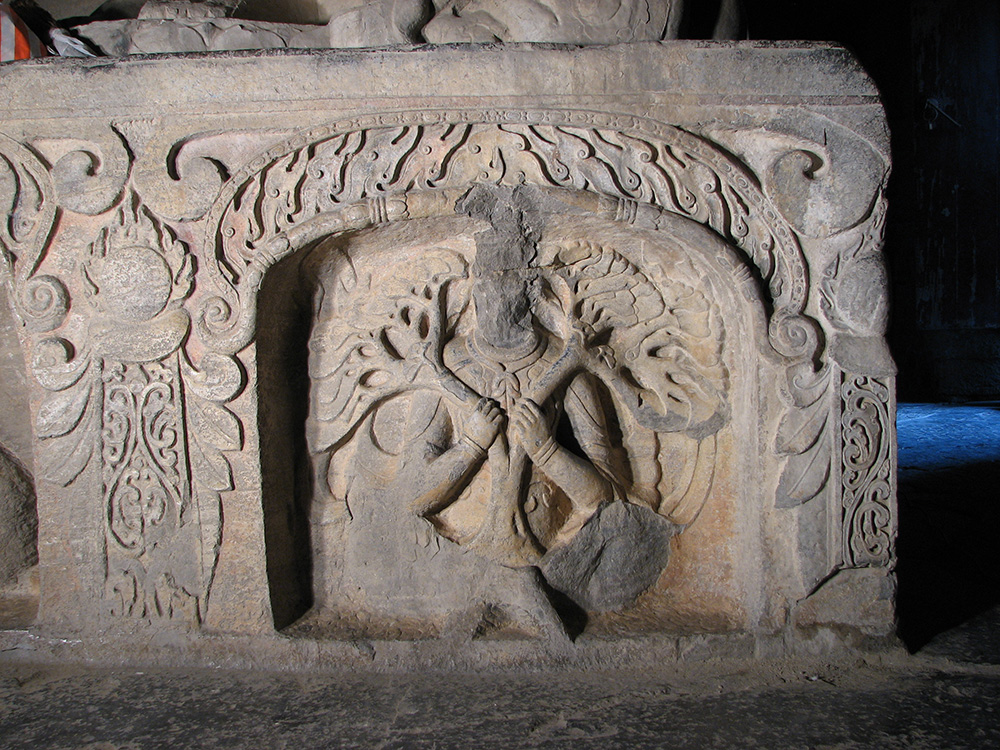
North Cave central pillar south, Wind Spirit King
North Cave central pillar west, Elephant Spirit King
North Cave central pillar west, halo detail
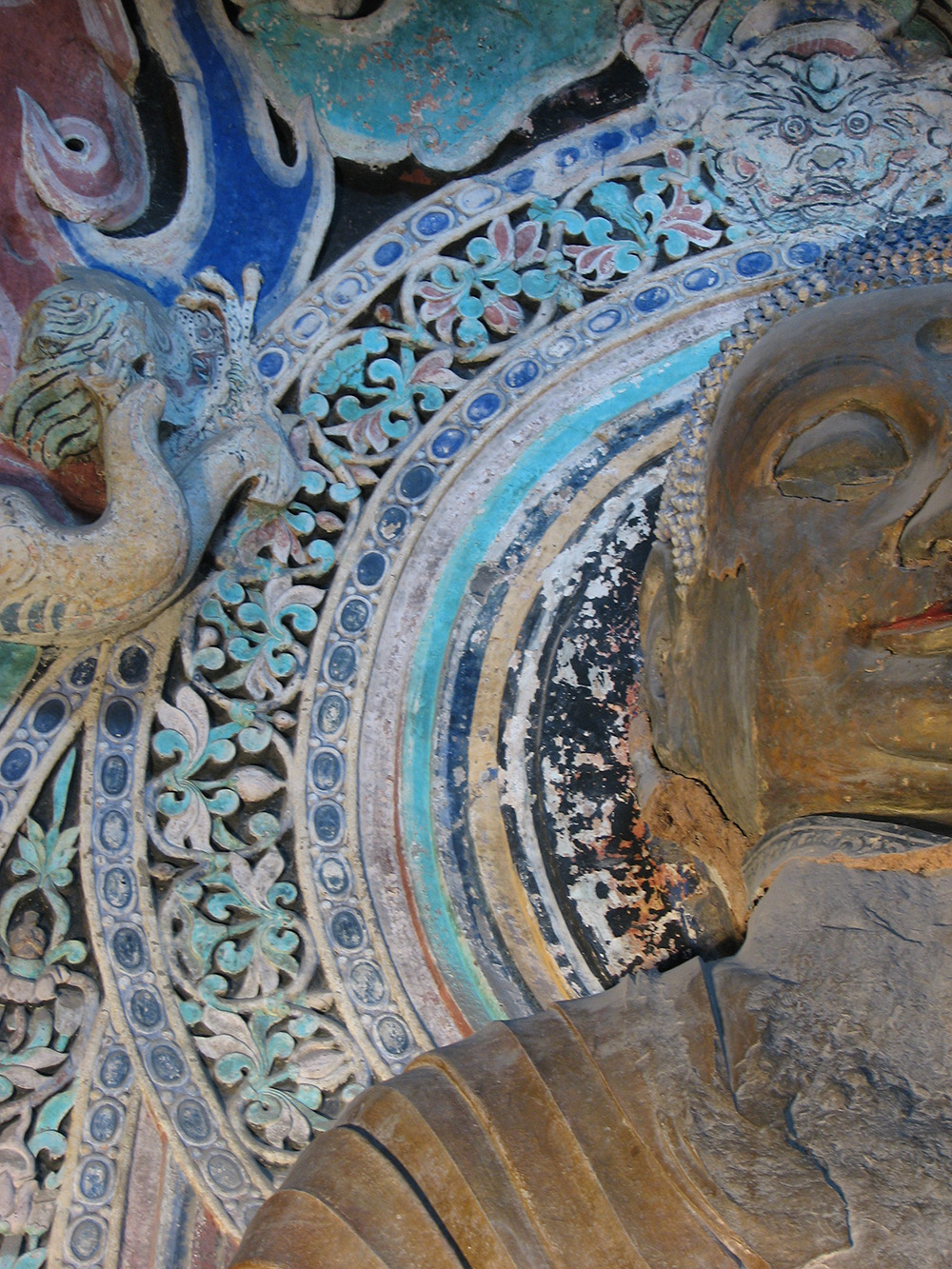
North Cave front wall reliefs
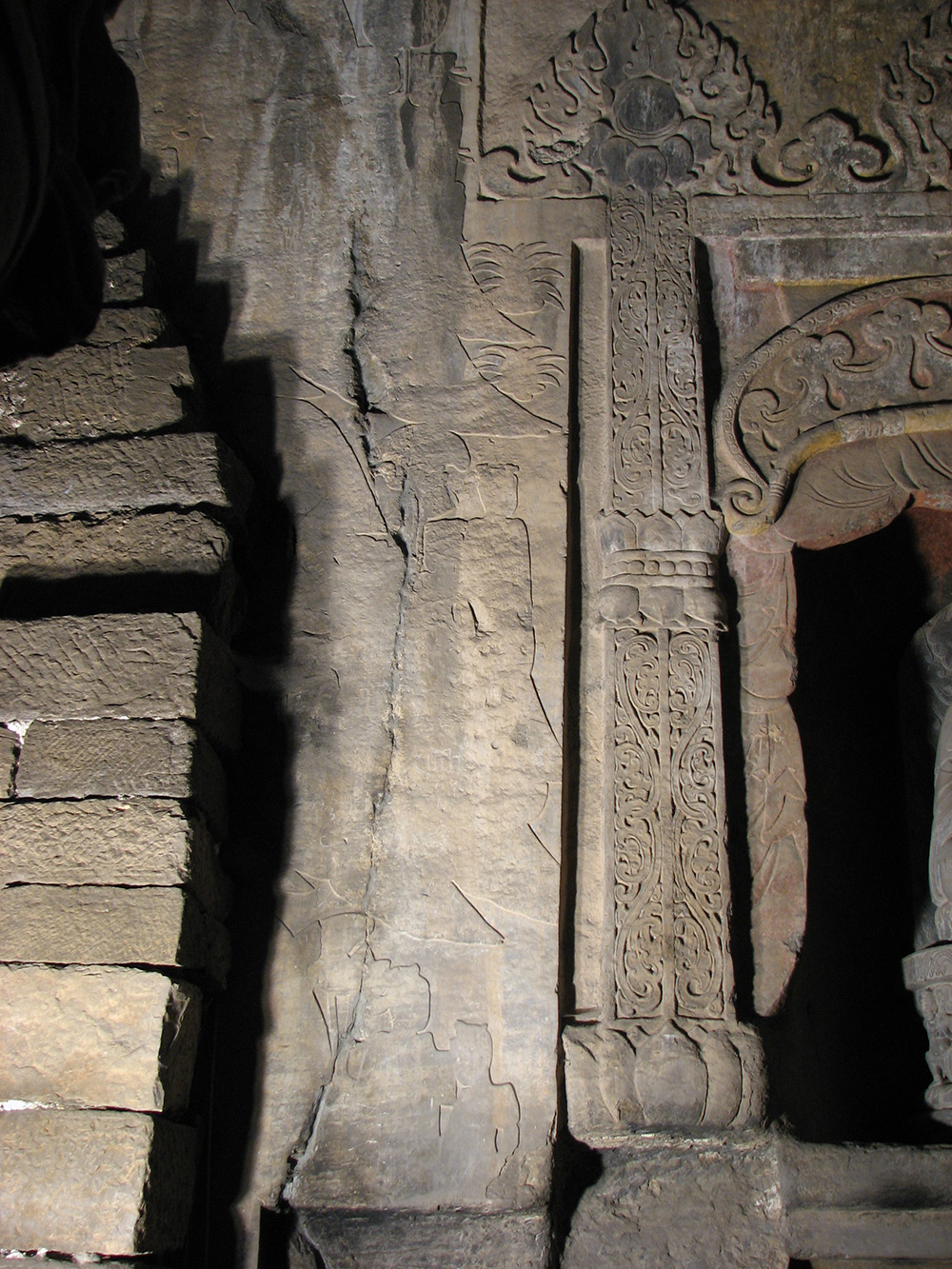
North Cave south wall, upper level, flaming jewels and lotuses
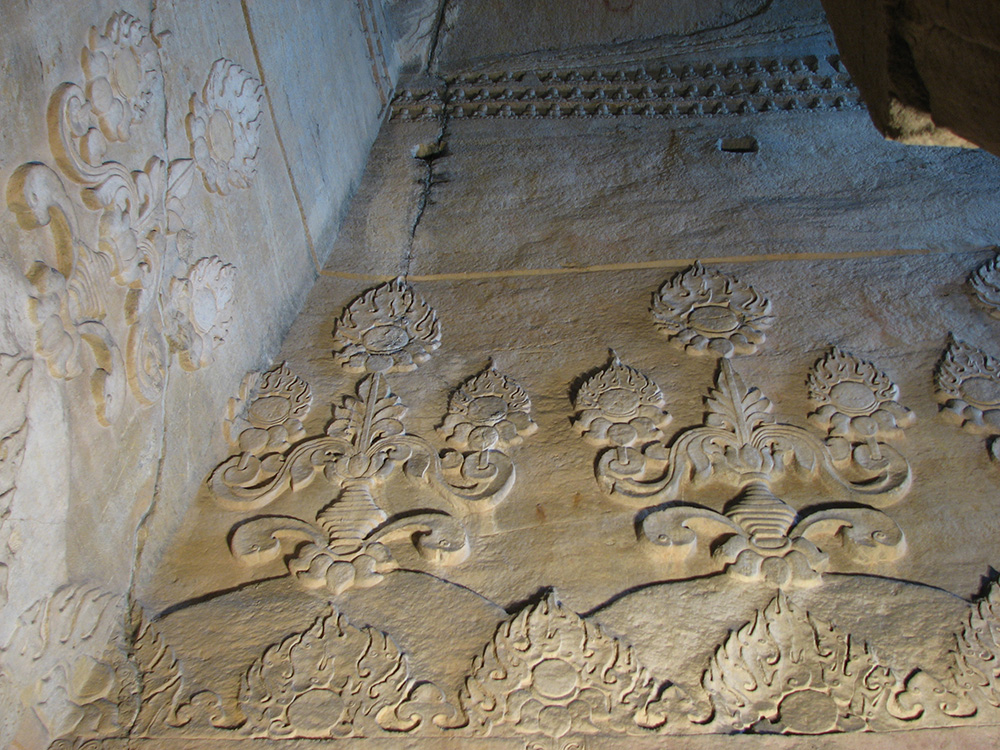
North Cave south wall, stupa-form niches
North Cave, southeast corner stupa niche
There are small caves on either side of the North Cave courtyard. The one on the south side also appears to be of Northern Qi origin. The main images are now damaged or removed, and additional carvings were added to the east wall in the Song. The central Buddha figure, now headless is seated on a square Sumeru throne with a lotus flower base. Behind him, there is a large flaming aureole carved in relief. He was accompanied by six attendant figures, two of which were free-standing and are now missing. Traces of the other four figures still remain.

